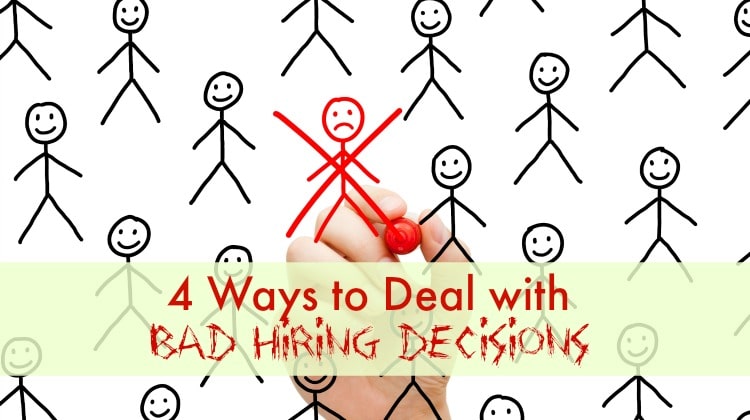
Hiring the right team determines the success of a business. No matter how thorough your hiring process is, some employees might not fit in your organization at all. You may think of firing the employee because of his or her poor performance or unfavorable behavior in office; but it isn’t as easy as it seems. In fact, any bad hiring decision affects the company.
From bearing the cost of replacement of the employee (which, by the way, is 2.5 times his or her salary!) to investing time and money in elevating the company’s reputation, a bad hiring decision has risky after-effects!
So how do you resolve bad hiring? If firing is the last resort, what options can you opt for to save lots of money and of course, time? Read on:
1. Bad Hires Should be Counseled
First & foremost, it is important to have a proper system in place to resolve such a situation. If an employee is influencing the environment negatively, it is necessary to have a series of counseling sessions with him or her. Try to understand the reason behind the employee’s misdemeanor or poor performance.
Even though it is a long process and may not always fetch fruitful results, it is a rather inexpensive option for the company. Acquaint yourself with the problems your employee is facing. There’s no harm in getting his or her perspective to arrive at a decision.
2. Strict Warnings for Existing Employees
It is not necessarily only new employees who will create troubles within the organization. An employee who has been on the team for a while can also cause problems with a new hire.
This can be due to many reasons. For instance, competition from new hires, high insecurity levels regarding jobs, and so on. Firing an existing asset of the company has a negative impact on the company’s reputation, and hence, it becomes all the more important to have a counseling session.
3. Make Changes in the Hiring Process
Make sure that your HR team does thorough reference checks before finalizing any favorable candidates. In order to gauge the interest and motives of the candidate, the selection process needs to include an exhaustive dialogue with the HR manager.
It is crucial to understand whether or not the potential employee sees your company as a source of adding value and experience to their career path.
4. Keep Firing as the Last Option
Late author Dr. Pierre Mornell once noted that, “the cost of replacement of that employee is two and a half times the person’s annual salary.” On an average, a company takes over six months to be able to cover that cost.
Apart from the monetary disruption, your company’s attrition rate goes up. The employee turnover ratio becomes high. Basically, it’s a bad situation for any organization to be in. And if that employee refuses to mend his or her ways even after the counseling sessions and repeated warnings, you have to turn to firing that person.
Every organization can make bad hiring decisions. While you can’t escape the ill-effects, you can certainly take precautions to avoid them.

